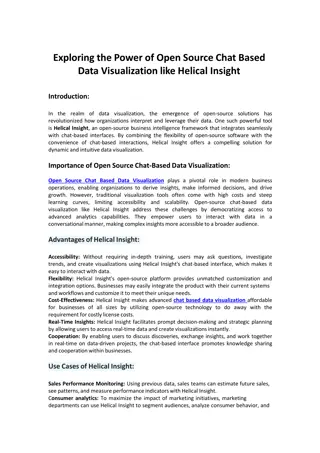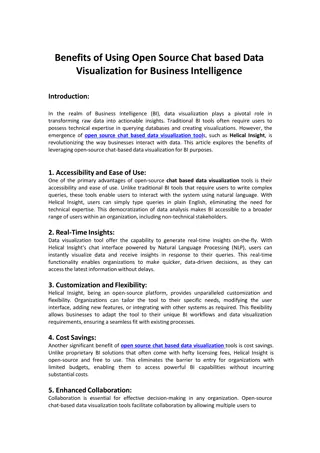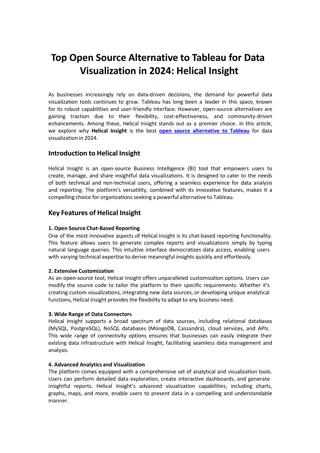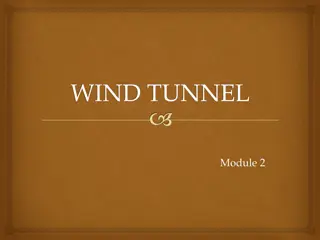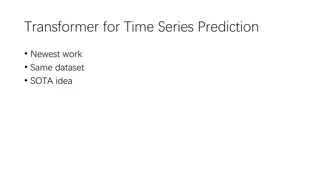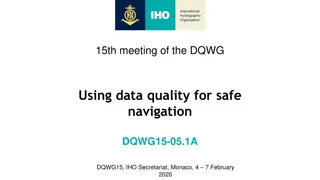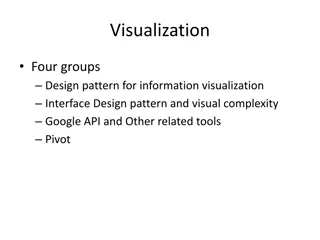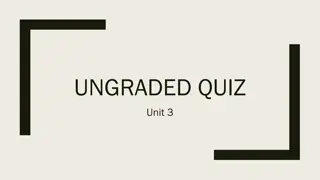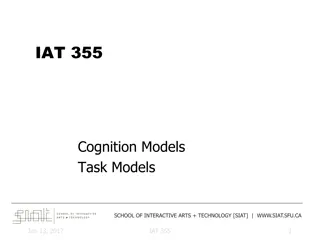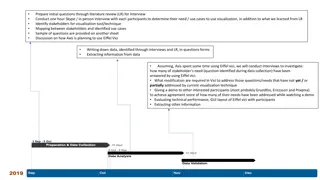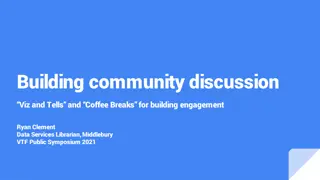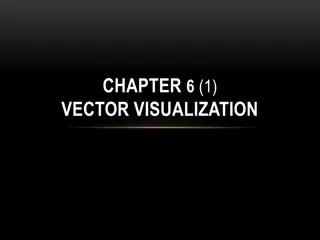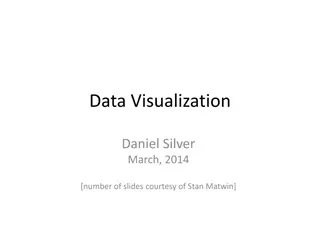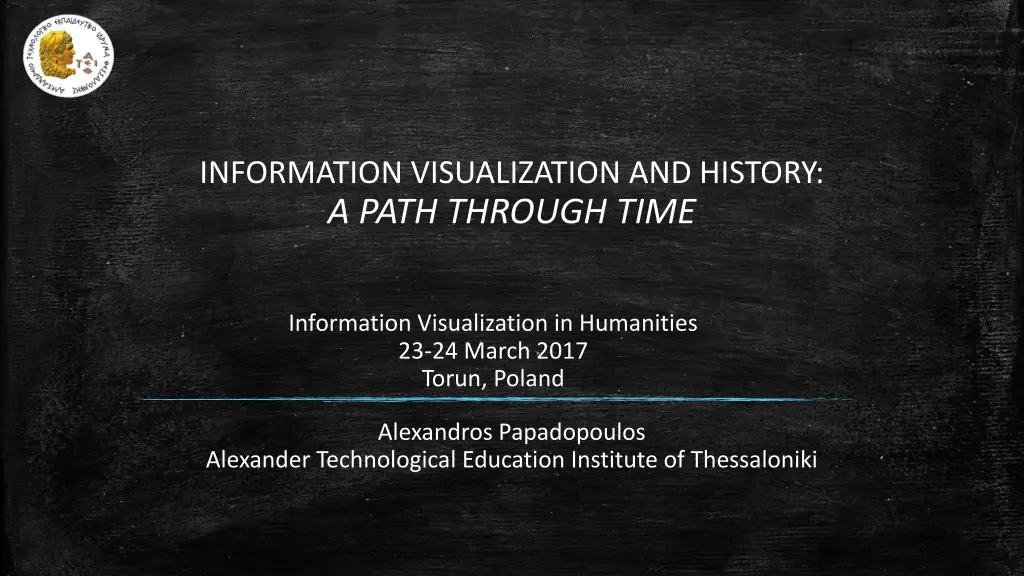
Visualization Through Time: Evolution of Information Visualization in History
Explore the evolution of information visualization through key milestones and historical events, from ancient times to the modern era. Discover the emergence of modern information visualization and its impact on fields like humanities, museums, and data interpretation. Witness the transformation of data presentation over centuries and into the 21st century, reflecting changing technologies and accessibility. Journey through time to uncover how information visualization has shaped our understanding of the world around us.
Download Presentation

Please find below an Image/Link to download the presentation.
The content on the website is provided AS IS for your information and personal use only. It may not be sold, licensed, or shared on other websites without obtaining consent from the author. If you encounter any issues during the download, it is possible that the publisher has removed the file from their server.
You are allowed to download the files provided on this website for personal or commercial use, subject to the condition that they are used lawfully. All files are the property of their respective owners.
The content on the website is provided AS IS for your information and personal use only. It may not be sold, licensed, or shared on other websites without obtaining consent from the author.
E N D
Presentation Transcript
INFORMATION VISUALIZATION AND HISTORY: A PATH THROUGH TIME Information Visualization in Humanities 23-24 March 2017 Torun, Poland Alexandros Papadopoulos Alexander Technological Education Institute of Thessaloniki
INFORMATION / DATA VISUALIZATION IN RETROSPECT MILESTONES OVER THE CENTURIES 120 103 100 94 80 60 40 35 26 20 17 5 0 Pre 1600s 17th Century 18th Century 19th Century 20th Century 2000 - 2009 Milestones/ Century
INFORMATION / DATA VISUALIZATION IN RETROSPECT Some milestones: 1280 (Spain) Paired comparisons diagram 1375 (Spain) Catalan Atlas 1500 (N/A) Rectangular coordinates (Leonardo da Vinci) 1570s (N/A) First modern atlas, astral / planetary positions 1801 (N/A) Pie chart 1962 (USA) Modern statistical graphics Source: http://www.datavis.ca/milestones
EMERGENCE OF MODERN INFORMATION VISUALIZATION 1800 - 1850 1850 - 1900 1900 - 1950 1950 1975 1975 Present Modern graphics First appearance Statistical graphics Golden Age Modern dark times InfoVis - Second wind InfoVis - Renaissance Art or Science? Source: A brief history of data visualization, M. Friendly, 2006
INFORMATION VISUALIZATION IN THE 21ST CENTURY What has changed: New technology opens the way for innovations in the field of InfoVis. Previous limitations are slowly being lifted. InfoVis becomes more and more accessible. Able to manage and present massive amounts of information. Historical Events: Discrete: Presented through generalized information Description: Numeric/ textual Descriptors: who, when, what, why Data can be deciphered to provide further insight on the past
MUSEUMS To fulfill its purpose, a museum must present its content in a way that allows the public to see it. Additionally, it ought to help the average visitor to understand the meaning of their exhibits. (Gilman B.I., 1918)
MUSEUMS Interpretation: Educational activity which supports the practical, intellectual, emotional and aesthetic access to one's cultural heritage. It doesn't incur on its own. Depends on the visitor's motives and the quality of the services offered by the museum. Attemps to enrich one's understanding with something different, which leads to the personal satisfaction of the visitor.
INFORMATION VISUALIZATION IN MUSEUMS Visualized information: Memorized and digested much more effectively. Possible access point for people who have no cognitive connection to a subject. Formatted in an easier to understand way for vulnerable social groups.
CLOSING REMARKS PERSONAL THOUGHTS Information Visualization still hasn t shown us its full potential. As technology evolves, it will keep surprising us. InfoVis provides different benefits and opportunities to different target groups. Museums must be both entertaining and educational to provide the most to their users. InfoVis is one of the methods that allow just that.
EPILOGUE THANK YOU Contact info: Alexander Papadopoulos alexandros.papadopoulos1000.gmail.com


